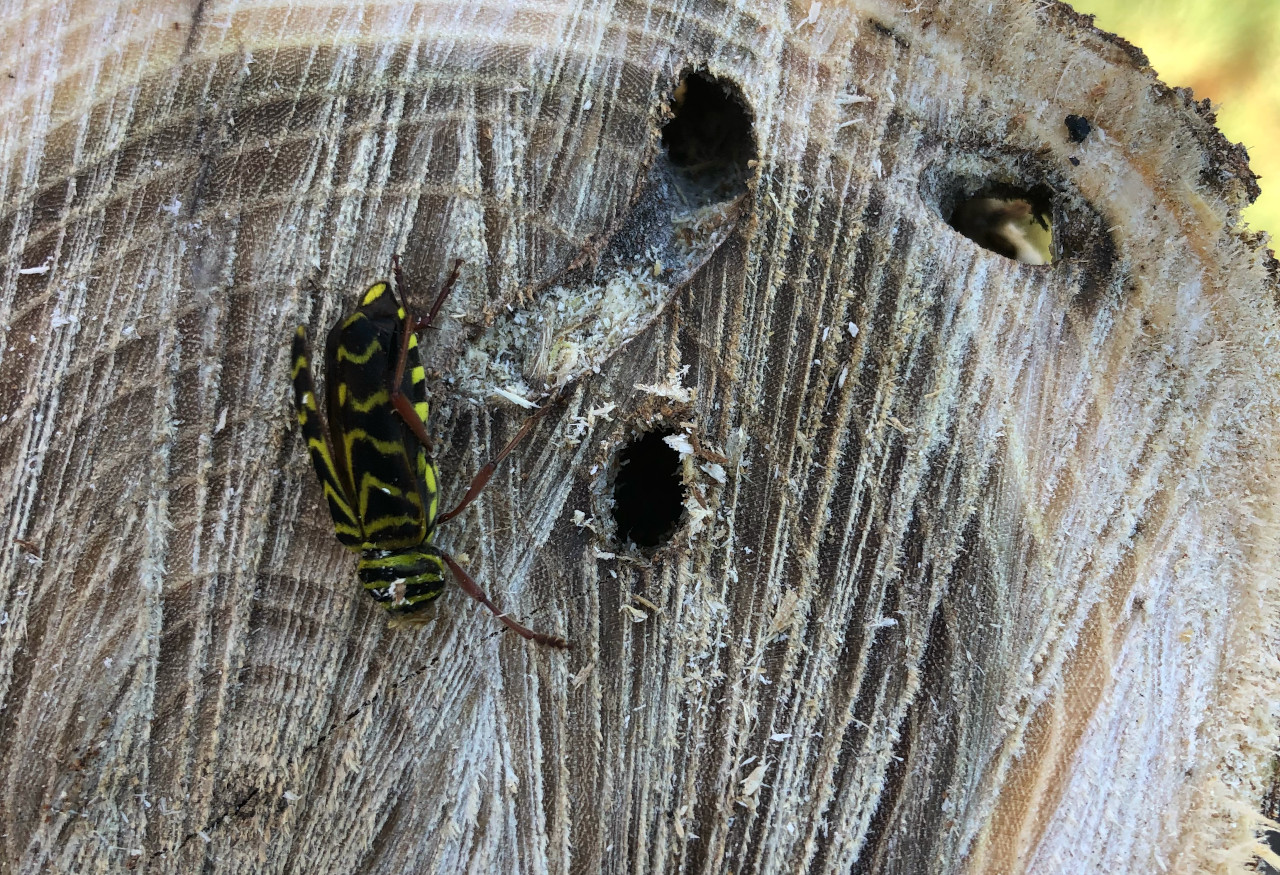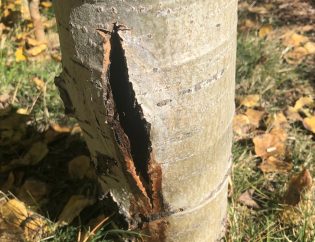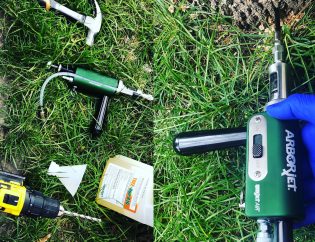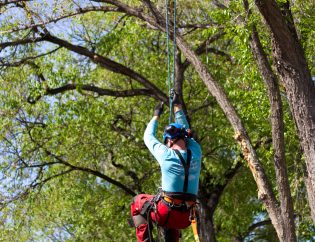
On your property, insects and microorganisms abound. If this is news to you, don’t go running for the sprays and bug bombs. This is a natural and beneficial state. Insects and microorganisms are key components in plant-nutrient recycling and decomposition, natural pest control and landscape-ecosystem health.
“A landscape without insects and microorganisms would be a very unhealthy environment,” notes Tchukki Andersen, BCMA, CTSP* and staff arborist for the Tree Care Industry Association. “The trick is to balance the threshold of healthy plants with having too much of a good thing, which is when the naturally occurring insects and diseases become a problem. This is where an integrated pest management (IPM) program may benefit your landscape plants.” Even if your goal is to have the best-looking yard on the block, it will look better if it is naturally healthy.
Periodic outbreaks of destructive tree pests and diseases occur as part of natural fluctuations in ecosystems. When homeowners take unguided actions against these pests, they often make these outbreaks worse. With guidance regarding the use and importance of IPM, a homeowner often can lessen pests’ impact locally. IPM provides the steps needed to promote a healthy landscape, prevent destructive pest outbreaks and to ensure diversity and vigor on a property.
Begin by keeping your healthy trees healthy. Monitor for pests and use preventative and cultural controls, such as proper irrigation and mulch. Many qualified plant health care companies can assist you in this first step.
Increase diversity
Many property owners have just a single tree or a few trees. Others have small backyard woods, which have become an important component of the urban environment. Small woodlands with a mix of tree species are often less susceptible to pest outbreaks than woods with a single species.
A diversity of tree ages also reduces the risk of pest outbreaks. As with species diversity, age diversity increases the complexity and stability of the ecosystem. A natural balance of organisms is more likely to develop as age diversity increases. For example, potential pests of young trees can be regulated by parasites and predators already well established on older trees.
“A healthy landscape is less susceptible to pest outbreaks and is more resilient if an outbreak does occur,” stresses Andersen. “When trees are overcrowded by other trees or plants covering the root zone, competition for light, water and nutrients results in increased stress. Trees under stress are more likely to be attacked by pests.”
The first clues of a tree health problem may be symptoms such as yellowing needles or leaves, thinning foliage or dieback on upper limbs. These problems may be caused by insect pests or disease pathogens, or they may arise from “abiotic” factors such as lawn maintenance activities, construction damage, drought, compacted soil or fertilizer/pesticide misuse.
What to do
A professional arborist can help you build and maintain an effective IPM program that will keep your property healthy and thriving. A professional arborist can also recommend treatments, including planting new trees, correcting soil deficiencies, increasing water and nutrients, monitoring for pests or providing pest management.
*Board Certified Master Arborist, Certified Treecare Safety Professional


